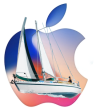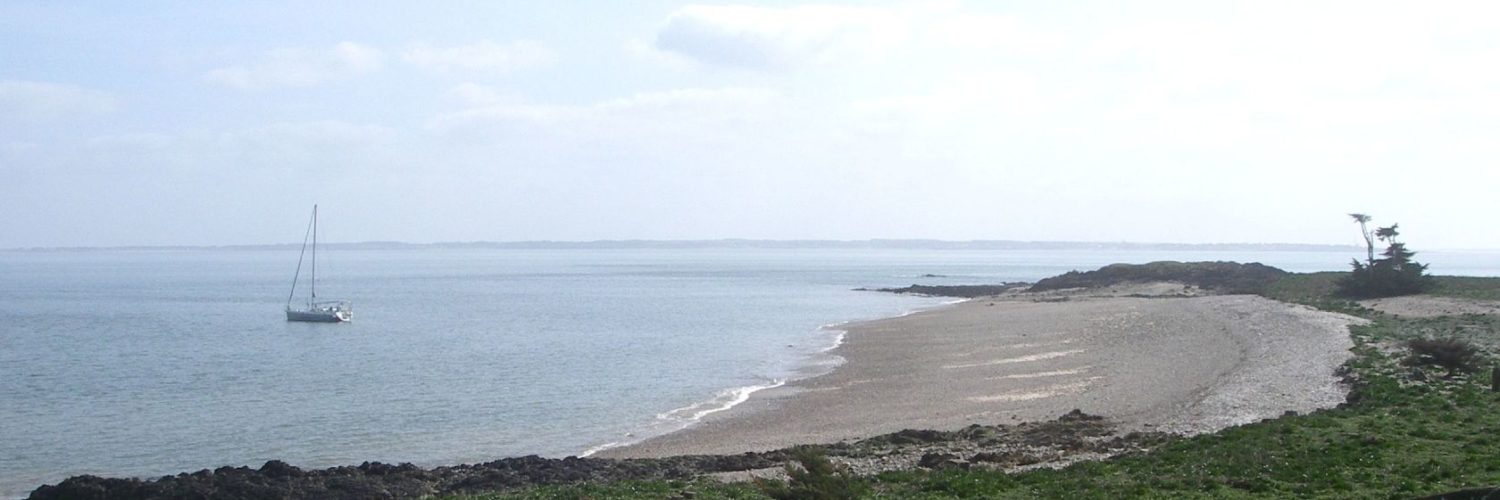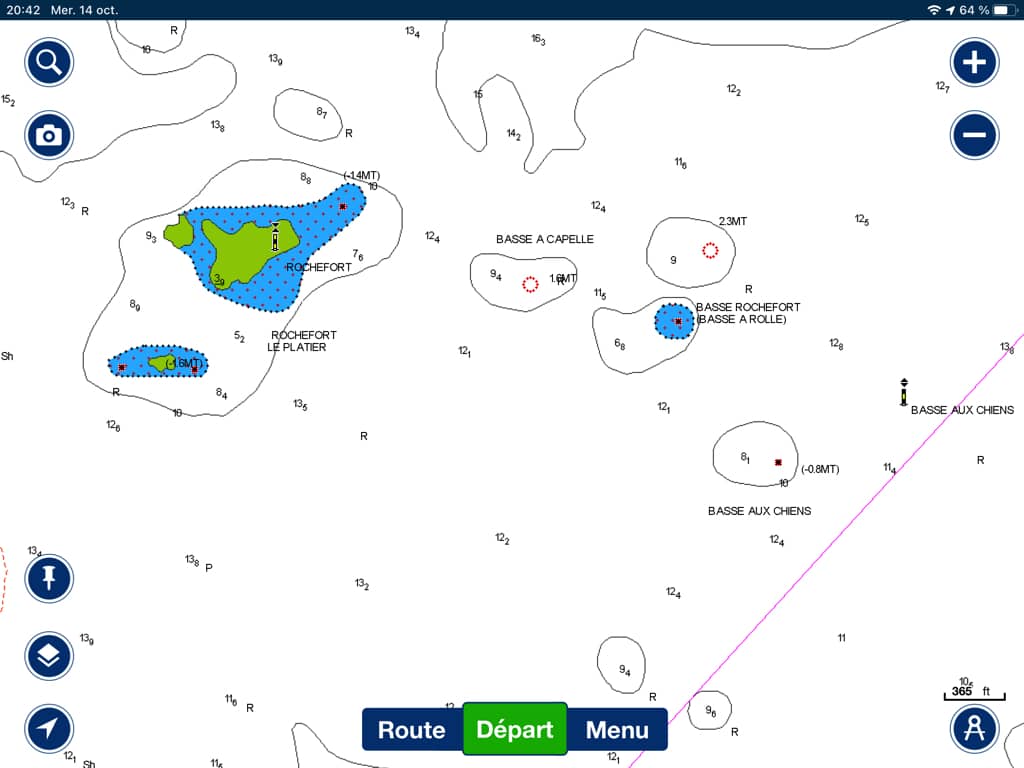Over the last few years, I have expressed myself several times on the quality and reliability levels of the electronic charts we use in yachting., more particularly with the navigation applications of our mobile devices (¹).
From the oldest article in 2013, it appears seven years later that nothing has really changed. On the occasion of a search for a landing in Galicia, I discovered that some editors still haven't updated changes that are almost five years old, like the port of La Coruña yet so busy. I can always be told that the examples I will cite on the West Atlantic coast do not affect safety in any way., but that gives reason to wonder about the rest of the coast. It should be remembered that SHOM took nearly a year to update on its raster charts the extension of the port of Minimes in La Rochelle, when the German cartographer NV Verlag had for a long time perfectly represented it on the NV Charts (²).
I went to La Coruña for the last time at the end of May 2016. The large pontoon which serves the catways to the south-east was already connected to the land. Today, visible on BING satellite view, three editors on 4 selected among the main, still have not updated their chart ! See the slideshow :
Even the Spanish ENC chart recently available in the Geogarage catalog is not corrected, only Navionics performed the update..
Going much further north, let's see Saint-Peter's Port in Guernsey, very popular for all North European boaters. The visitors pontoons, once detached from the land, have been for several years now connected by a pontoon allowing land access, without waiting for a place in one of the generally overcrowded marinas. Here, only the Imray chart is up to date, and partially the satellite view. The most recent satellite image in Google Earth shows the current layout. See the slideshow :
Here, we may be too far from Italy for Navionics to come and check the place, but the British Admiralty, still !
I return to La Coruña with another example which, itself, directly concerns safety. The opening of this deep bay is blocked by a long bank of rock shoals that can create breakers in strong winds from north to west. Below, only the SHOM map presents explicit information making it possible to warn the navigator who does not know the surroundings. See the slideshow :
The repeated annotations "Breakers in heavy seas" and the west and north alignments clearly indicated and annotated make it possible to ward off these dangers., otherwise harmless in good weather or inshore winds. This information is missing on the other charts, this, in turn, has a direct impact on boater security.
I don't really have time to travel the entire coastline to find other examples, but they are certainly quite numerous. All this confirms to me that we must remain very careful about the use of our electronic charts, and that it is not useless to complete them with regularly updated guides, or at least crosscheck the information with different charts.
If you have examples in your sailing regions, do not hesitate to share it.
–––
(¹) See tickets :
– Raster charts... the come back
– Electronic charts : scales and overscale
– Charting compared, mixed results
(²) NV Chart extends coasts of France from SHOM
–––


On the SHOM map of Arcachon basin on paper or digitized, the reception and fuel pontoon of the Arcachon marina is poorly positioned; it is now further west. GoogleEarth makes the same mistake but Bing – whose image dates from 2019 – position it correctly.
Otherwise, even if the access channel to the northern pass varies frequently depending on the storms, I am surprised that SHOM persists in not mentioning the location of the beacon buoys. I pity the boater wishing to enter the basin when he had not programmed it and having to channel on sight without map aid…
Hello,
Thank you Francis for bringing our attention to this specific topic.. The solution lies in the use of multiple map sources, including up-to-date paper maps.
However, requests for map updates by browsers are possible for SHOM maps via the data.shom.fr website. Requests are analyzed and then made according to their relevance . Then these updates will not be visible, on SHOM raster maps, only in the latest version ( 2 yearly) . Some requests come true after several years, the troops decrease sharply.
SHOM no longer carries out measurement campaigns in our coastal navigation areas, especially not on the foreshore. SHOM focuses on the shipping lines of large vessels subject to SOLAS rules , more than 120m long, as well as the deep sea with exploitable resources: oil etc …
For Navionics, just send an email to help@Navionics.com in your native language. You must provide the version of your application and those of your cards, by adding screenshots of Navionics charts (use the webapp.navionics.com website to make sure you have the latest updates) and SHOM (use data.shom.fr) . Give the exact location of the problem. Be as courteous as possible. A study will be carried out, the updates selected will be available immediately, provided you have an up-to-date license.
On the data.shom.fr site you can view the current requests according to their type:
-Depth
-Wrecks and Obstruction
-Coastline
-Cables and pipes
-Toponyms
-Buoys, Tags
-Restricted area
-Background nature
-Lights and fog signals
You will find the description of the problem provided by the author, dates and status. Each status has its color code.
The new marinas "forget" to send their new basins and organization of pontoons, as well as the new probe lines. Each rejecting the responsibility of carrying out the measurements.
What will happen to the future wind farms, which will soon make the complete tour of our coasts?? Updates will be made as the work progresses or only at the end of the operation start-up? Who will define the exclusion zones, the manager, the maritime prefect, la DDTM, ..? Who will send this information to SHOM? Normally it is the prefect by decree. With us it's complicated!
For "Cart-tanneur"
I would be interested in having the location coordinates of these pebbles in the north cove of Stornoway, I can't find a difference today between Navionics and UKHO charts
For the Bass with dogs north of St Malo, it is advisable when heading towards St Malo to leave them to starboard, in the west using the alignment at 222 degrees towards the tip of the Varde which runs alongside the cardinal east buoy of Rochefort. If you go around to the north, you have to take a long turn and go far beyond the cardinal West Rochefort "beacon" which is located on the last usable pebbles of this plateau.. A West cardinal buoy anchored in the bottom 12m west of the pebbles has never been installed.
Our electronic cards will only evolve with our participation. At your keyboard and mouse!
Hi Francis!
This is a real important thread. I think with all the updates and „latest edition“ of electronic charts the navigator is made to believe that he really got the latest and up to date chart from the chart manufacturers. Do you remember: last year the charts from Netherland Hydrographic Institute (NLHO) sold through Geogarage were outdated because the NLHO only updates the electronic chart with every new reprint of their paper chart set.
This year I bought the „latest chart“ from C-map through a Furuno account covering the Baltic Sea. While NV-Charts updated in May about a large new wind park at Kriegers Flak (sailing prohibited in this area) this C-Map chart still doesn’t show any restrictions!
So this C-Map charts are not any better than old paper charts.
Looks, Jochen
Patrice says:
Sailing with a captain in Scotland in the Hebrides, we were exiting Stornoway and heading to the northern point of Lewis with the intention of descending via the west coast of Lewis. Evil took us, once we reached this close upwind coast in the swell we encountered a current much higher than that indicated on the maps, so turn around and return to Stornoway. Not having the intention of being laughed at by the very nice Captain Harbor, we made the decision to anchor in the north cove of Stornoway. In the engine mooring phase with Navionics on my iPad I was heading quietly through the middle of the bay, when the captain downstairs tells me "but where are you going? You have a pebble right in front of you ”. No stone on Navionics, but my pollster indicated a sudden rise in funds ! The captain was controlling my navigation on Maxsea with C-MAP charts, luckily for us. I sent screenshots to Navionics without ever getting a response. Because indeed there was a superb rock almost flush.
While sailing on the Belle Angèle, old rig which was unfortunately destroyed at the entrance to Aber Wrac’h, we were coming back from Cancale bay, after having passed the Pointe du Grouin, les Tintiaux from the north before starting to dive to return to St Malo, we went north of the Basse aux Chiens. there are two tags, an East and a West on the navionics map, past the West for at least a quarter of a mile, I can still see very significant eddies on the surface while my GPS position allowed me to shoot down. Arnaud the skipper when questioned told me yes, goes even further, the board overflows much more than on the map. Not to mention that normally the danger should be between the two beacons !
By a tide of medium water we skirted the casquets to spin on Ste Anne (in the Channel Islands), sur Maxsea (MTZ version 2 well up to date) the currents did not exceed three knots, as we were spinning to 6 surface knots, and we saw the stones recede, luckily the reversal was not too far !
During the first nautical charts, a French admiral said “nautical charts will make our navigators lose their seaworthiness.. »Then the electronic maps ???
A big thank you for this informative feedback. About Navionics, this is the page for making an error report. Usually they check. But let's not dream, regions little frequented by yachting are more neglected than elsewhere. The ongoing, the prediction models in GRIB format such as the MyOcean NWS provided by Weather4D are very precise.


About the Basse Rochefort :
The SHOM map shows that the west turret of the Basse Rochefort must be prepared at a good distance, or better take the alignment east of Basse aux Chiens. The Navionics chart is less precise in its graphics but sufficient to ward off dangers :
We should make them responsible in case of damage
It is shameful
As usual good info. We wonder why these guys are paid ..
Thank you Francis